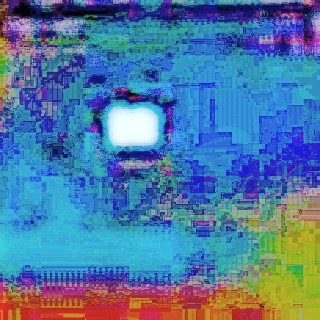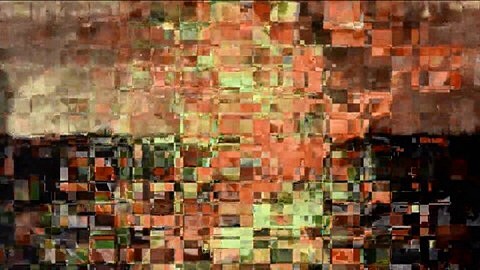
The convergence of immaterial digital processes and the physical world is an increasingly obvious part of everyday experience, and has been steadily getting more attention since the start of the twenty-first century. There is nothing new about this relationship, which has been developing since at least the 1980s, but what is of interest is how these developments have stopped being �new� and simply become a part of everyday reality, accepted and largely ignored as just an aura of the digital. The variety of terms attempting to name these developments reveals the different approaches and concerns of the people introducing them: as challenge, as celebration, as philosophical shift.
The variety of terms attempting to name these developments reveals the different approaches and concerns of the people introducing them: as challenge, as celebration, as philosophical shift. The names in circulation, �glitch� (or �glitch art�), �new aesthetic� and �postdigital� all converge on their topic: how digital production renders the aura of information and its claims of immediacy tangible, physically present, but at the same time withdraws that instrumentality from immediate engagement by shifting the key parts of production from human action to the generative capabilities of digital technology and out-of-sight on-demand production that is then delivered to its human audience, seemingly without the need for human labor. This distancing is always true of the interaction with digital systems through computers of all type. Not just via the hand-held devices, the tablets and cellphones that make a continuous interaction possible, but through the persistent monitoring of Alexa, Siri and other voice-responsive systems that monitor their users for any requests.

The response to this ubiquity is banality. In becoming an everyday part of the work, these machines make their systemic assumptions about how that world should be ordered into a commonplace. To the extent that any of the aesthetic responses have significance beyond simply a celebration, what James Bridle called �waving at the machines� in his proposal of the �new aesthetic,� it lies with their attempts to create a critical consciousness of these technologies as forces re-constructing the lived world according to the demands of an immaterial capital. The persistent monitoring of their �owners� that every device engages in is both a necessity for the device to function at all, and (simultaneously) a mass surveillance and data mining that continues the advance of digital capitalism into private domains that historically were outside of accumulation. These technologies are not insidious invaders. They are realizations of the underlying structural demands of capitalism being acted-out directly through technology: machineries are crystallizations of the ideologies that enable their use, form given to the ideas that prompted their construction.

Excerpt adapted from A Semiotics of PostCinema
|

|